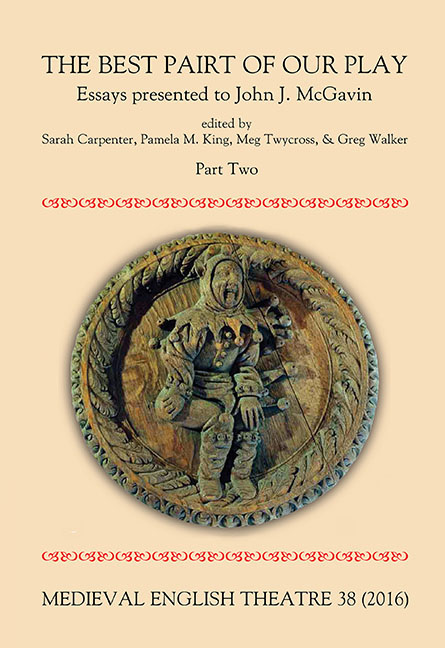 Medieval English Theatre 38
Medieval English Theatre 38 Published online by Cambridge University Press: 20 April 2017
When the formidable Adam Orleton was enthroned as Bishop of Hereford on 2 October 1317, he was still heavily involved in diplomatic negotiations for Edward II in London and in France, so his visits to his new see were brief and sporadic until late in the summer of 1320. At that point, perhaps in part due to his lengthy absence, perhaps in recognition of the less stringent administration on the part of his predecessor, Richard Swinfield, Orleton saw his first task as a widespread and substantial Visitation of the ecclesiastical establishments under his control. The importance of this initiative can be seen in his obtaining in January 1320 a bull from Pope John XXII authorising him to visit and correct the cathedral chapter, despite its traditional immunity from episcopal Visitation.
Among the establishments subject to Orleton's formal Visitation was the Benedictine Priory of St. Mary at Abergavenny, Monmouthshire. Events at the Priory had come to the attention of its local patron, John, second Baron Hastings, and had caused sufficient consternation that he had complained to the papal Curia. So, on Thursday, 25 September 1320, Orleton made a personal Visitation and recorded the results formally in his Register. He found that the Priory had not been subject to Visitation in the previous forty years, and that strict observance of the Benedictine Rule had seriously fallen off; that despite its income being sufficient to support thirteen monks, the Priory housed at most five or six; that no prior had been properly appointed by election, but that one Fulk Gastard had taken on the position of prior dative, and had himself been guilty of alienation of goods and ‘many vices of incontinent living’.
The monks were found to be neglecting the rule of silence, to be eating meat on fast days, to be neglecting the Night Offices, and to be playing forbidden games with dice and knuckle-bones.
To save this book to your Kindle, first ensure [email protected] is added to your Approved Personal Document E-mail List under your Personal Document Settings on the Manage Your Content and Devices page of your Amazon account. Then enter the ‘name’ part of your Kindle email address below. Find out more about saving to your Kindle.
Note you can select to save to either the @free.kindle.com or @kindle.com variations. ‘@free.kindle.com’ emails are free but can only be saved to your device when it is connected to wi-fi. ‘@kindle.com’ emails can be delivered even when you are not connected to wi-fi, but note that service fees apply.
Find out more about the Kindle Personal Document Service.
To save content items to your account, please confirm that you agree to abide by our usage policies. If this is the first time you use this feature, you will be asked to authorise Cambridge Core to connect with your account. Find out more about saving content to Dropbox.
To save content items to your account, please confirm that you agree to abide by our usage policies. If this is the first time you use this feature, you will be asked to authorise Cambridge Core to connect with your account. Find out more about saving content to Google Drive.